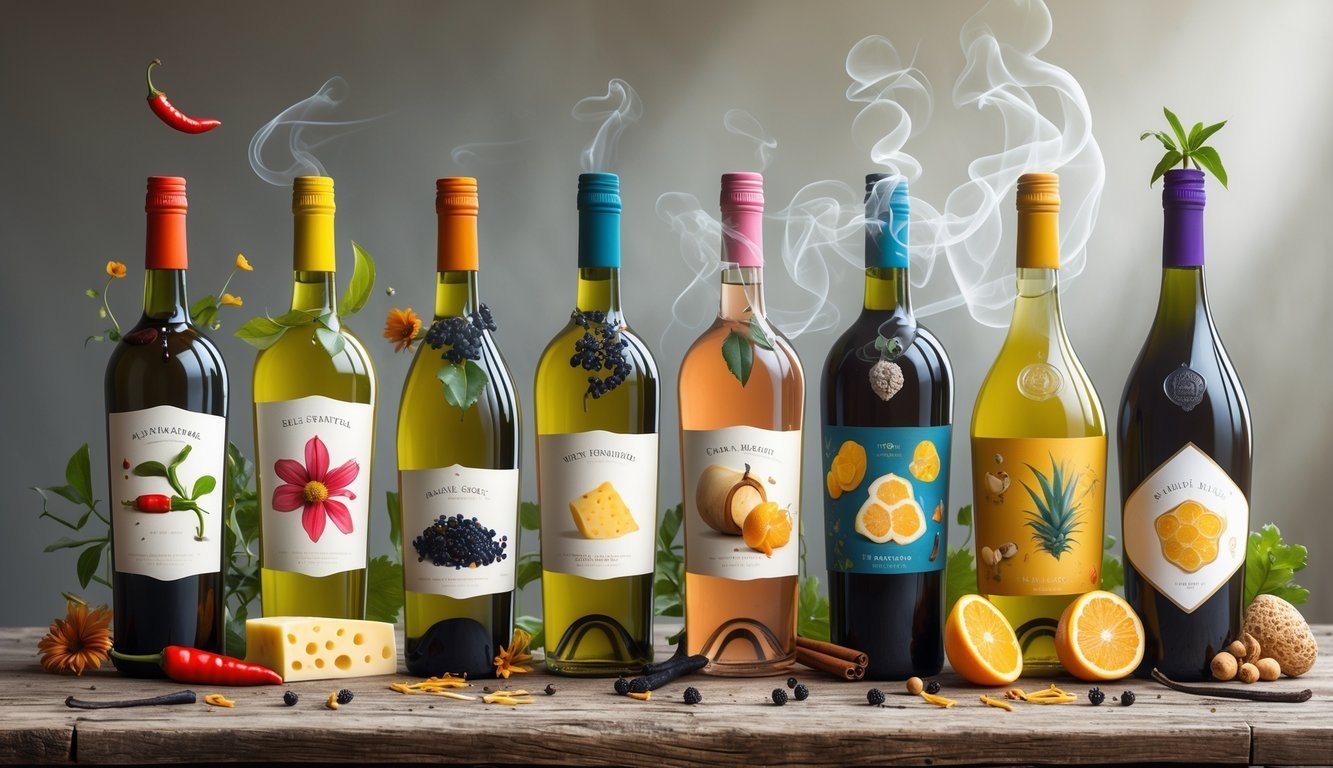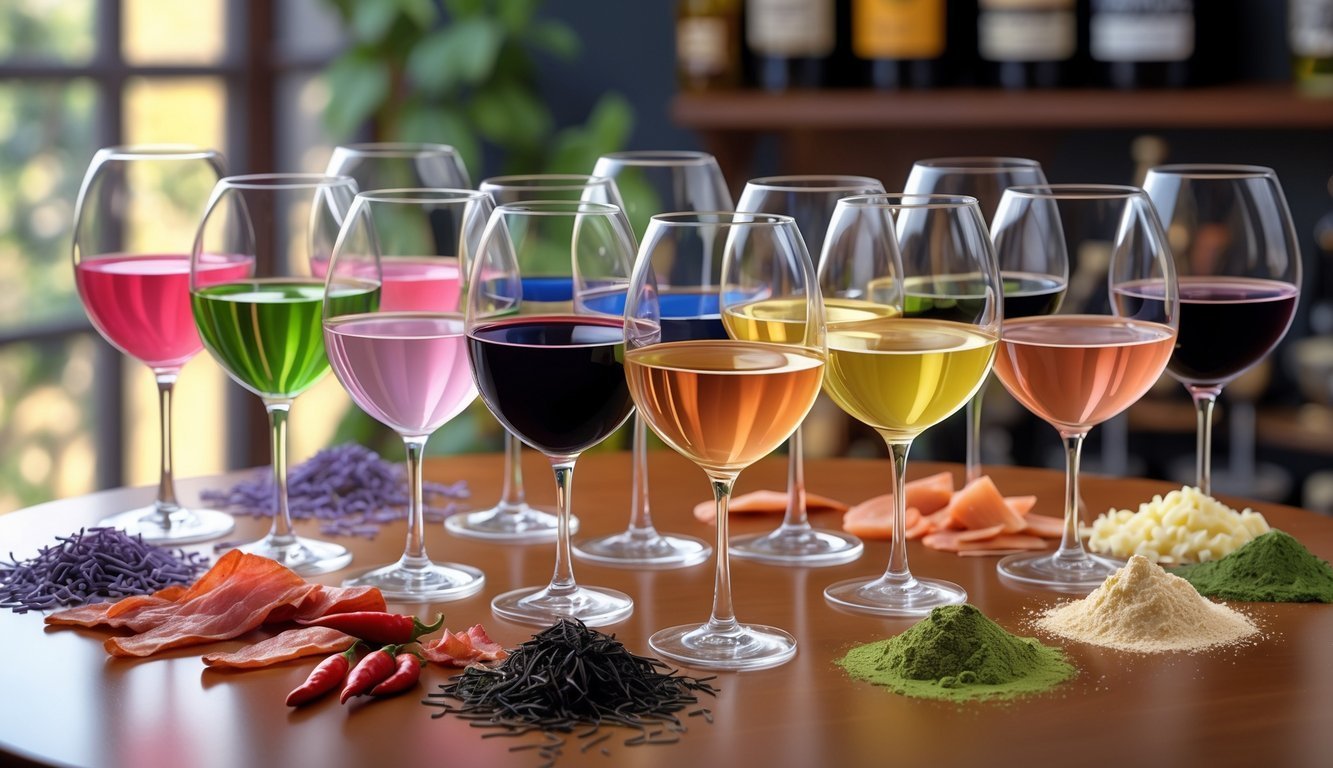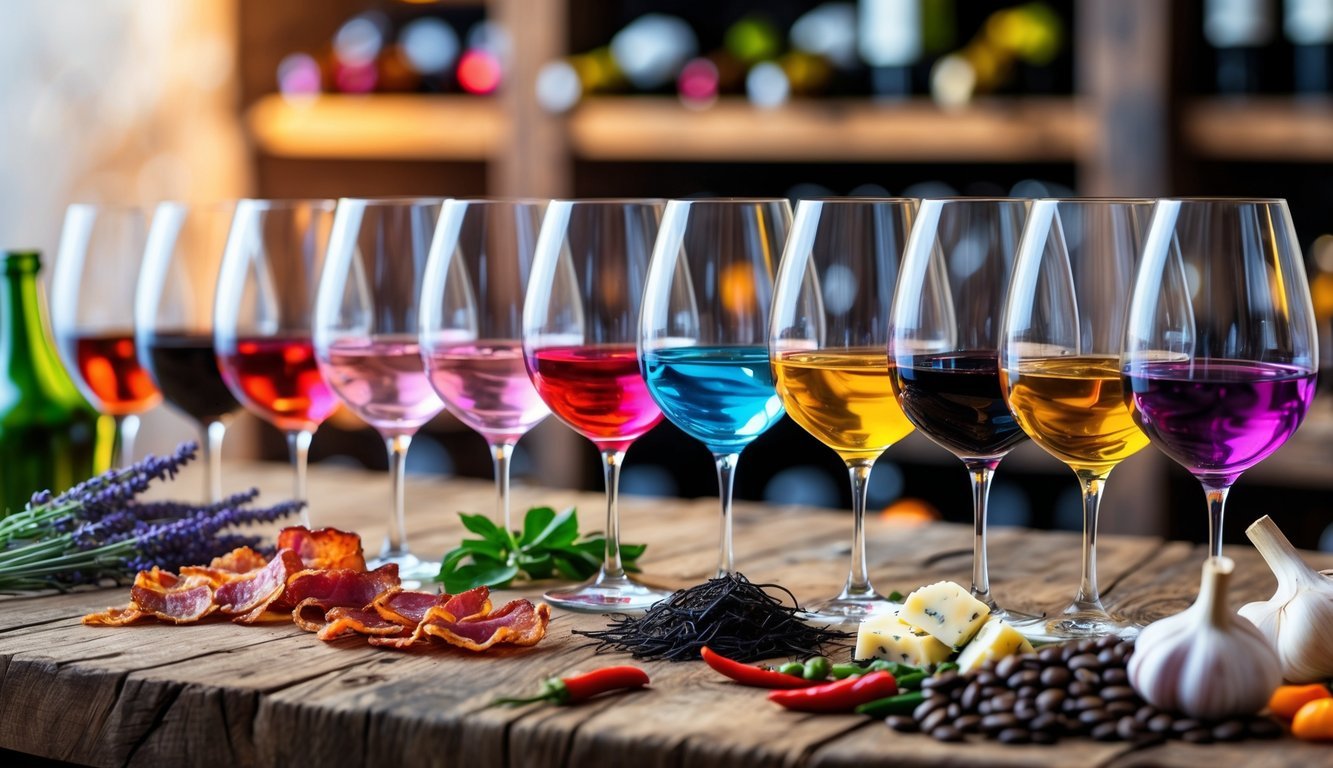PsychNewsDaily Publishers
100 Summit Drive
Burlington, MA, 01803
Telephone: (320) 349-2484
PsychNewsDaily Publishers
100 Summit Drive
Burlington, MA, 01803
Telephone: (320) 349-2484
Wines can feature unexpected flavors like bubblegum, metallic notes, and savory elements, often derived from unique grapes and unconventional winemaking techniques, enhancing the tasting experience.

Wines usually bring to mind flavors like cherry, apple, or vanilla. But every now and then, a bottle shows up with a taste you never saw coming. Some hint at bubblegum, others go as far as a metallic tang that’s almost like blood.
Here are 10 of the most bizarre wine flavors out there—get ready to rethink what you thought wine could be.
You don’t have to be a sommelier to get into these wild flavors. Winemakers use unusual grapes or oddball methods to tease out notes you’d never expect.
Honestly, exploring these can be a lot of fun and way more memorable than just opening another bottle of cab.
Thinking about giving something weird a try? These wines might sound wild, but they could totally change what you look for in your next glass.

Some wines just don’t play by the rules. You might pick up fresh herbs, oddball fruits, or even savory flavors that make you do a double-take.
Others twist dessert wine flavors into something you never saw coming. These weird notes usually come from rare grapes or experimental winemaking.
Wines like grüner veltliner and sauvignon blanc often burst with herbal flavors. Sometimes, you’ll notice scents of cut grass, dill, or even green beans.
A few herbal wines also bring cedar or pine into the mix. Grapes or even the soil itself can give off these fresh, sharp aromas.
Cabernet sauvignon and merlot usually lean dark and fruity, but every so often, they sneak in hints of mint or crushed leaves. Pinot noir sometimes brings a woodland vibe or a touch of herbs.
If you’re into wines that taste a bit like the outdoors, these could be right up your alley.
Some wines throw you a curveball with flavors like banana, bubble gum, or walnut. Whites like chenin blanc or pinot gris sometimes do this.
Gewurztraminer is famous for tasting like lychee or rose petals, which keeps things interesting.
Grapes like Kékfrankos can deliver flavors far from your basic berry or citrus. Even reds such as zinfandel might surprise you with cola or dried fruit, especially as they age.
Wine doesn’t always have to be sweet or fruity. Certain reds—think pinot noir or South African Pinotage—sometimes show off savory flavors.
Pinotage, in particular, can have a burning rubber note that sparks debate among wine lovers.
You might also notice smoked meat, leather, or soy sauce in some bottles. These flavors usually develop during fermentation or aging.
A good cabernet sauvignon, after it’s matured, can show earthy, umami qualities that balance out its tannins.
Dessert wines are often sweet, but not always in a predictable way. Madeira, especially from Malmsey or Bual grapes, can taste like walnut or dried fruit, with a smoky kick.
This gives the wine a richness that’s more than just sugar.
Sauternes and late-harvest wines usually bring honey and apricot, but sometimes they sneak in a spicy or herbal note. These unexpected twists make dessert wines a lot more complex than you’d guess.

If you’re chasing down the weirdest wine flavors, you’ll probably have better luck in lesser-known regions or with winemakers who like to experiment.
Some of these bottles are surprisingly affordable, so you don’t have to empty your wallet to try something different.
A lot of odd flavors come from places in Europe that don’t usually make the headlines. The Loire Valley in France, for example, has wines like Grolleau Gris and Grolleau Noir—totally different from the usual suspects.
Austria’s Alpes de Haute-Provence region makes wines with grassy, fresh notes that might throw you off in a good way.
In the Loire’s Savennières area, you’ll find wines made from Pinot Blanc and Mourvèdre that taste like nothing else.
Grapes like Kadarka in Hungary or rosés such as Steininger Cabernet Sauvignon Rosé also shake up classic styles with unexpected flavors.
You can hunt down these rare flavors by picking bottles from certain producers. Domaine des Herbauges and Domaine des Baumard in France are solid choices if you’re curious.
They blend classic grapes with unusual combinations.
Some 2015 wines—especially rosés like Jas des Vignes Rosé—get praise for their bold, unique flavors. This one has fruity notes and a bit of summer heat.
If you want to branch out, try grapes like Carmenère or Pinot Grigio from smaller producers. Those bottles often show off the weird and wonderful side of wine, and they’re not too hard to find.
You don’t have to spend a fortune to try something out of the ordinary. Some cheap wines use grapes like Mourvèdre or styles like Cabernet Sauvignon Rosé to create flavors you won’t forget.
Look for wines aimed at casual drinkers but with a sense of adventure. Austria and the Loire Valley offer plenty of affordable options that highlight unique grapes without breaking the bank.
Keep an eye out for wines that can handle August heat or have hints of spice and fruit. These usually cost less but still deliver something new in your glass.

Maybe you’re wondering just how weird wine flavors can get, or what rare grapes are out there making these surprises. Different aging methods and winemaking styles also play a big role in creating spicy or savory notes.
You’ll find flavors like bubblegum, metallic edges, or even a blood-like tang in some wines. Some whites pick up a skin-contact taste, which gives them a deeper and sometimes funky vibe.
Grapes like Tempranillo, Mission, and Tinta Cao stand out for their unusual flavors. They often make wines that are nothing like what you’d expect from classic European varieties.
Some rare wines have hints of wild herbs like rosemary, especially from the garrigue region near the Mediterranean. These herbal touches give the wine a fresh, earthy character.
Aging wine in clay or old wood instead of standard barrels can add smoky, nutty, or spicy flavors. These methods usually make the wine more layered and interesting.
Some wines really go off-script with peppery, smoky, or even meaty flavors. Grapes and winemaking tricks focused on savory notes make these bottles stand out from the usual sweet or fruity ones.
Winemakers sometimes leave white grapes on their skins or let wild yeast handle the fermentation. These choices can lead to funky, floral, or even mineral flavors.
You just don’t find those kinds of tastes in most traditional wines. It’s pretty fascinating how much these methods can change the whole experience.